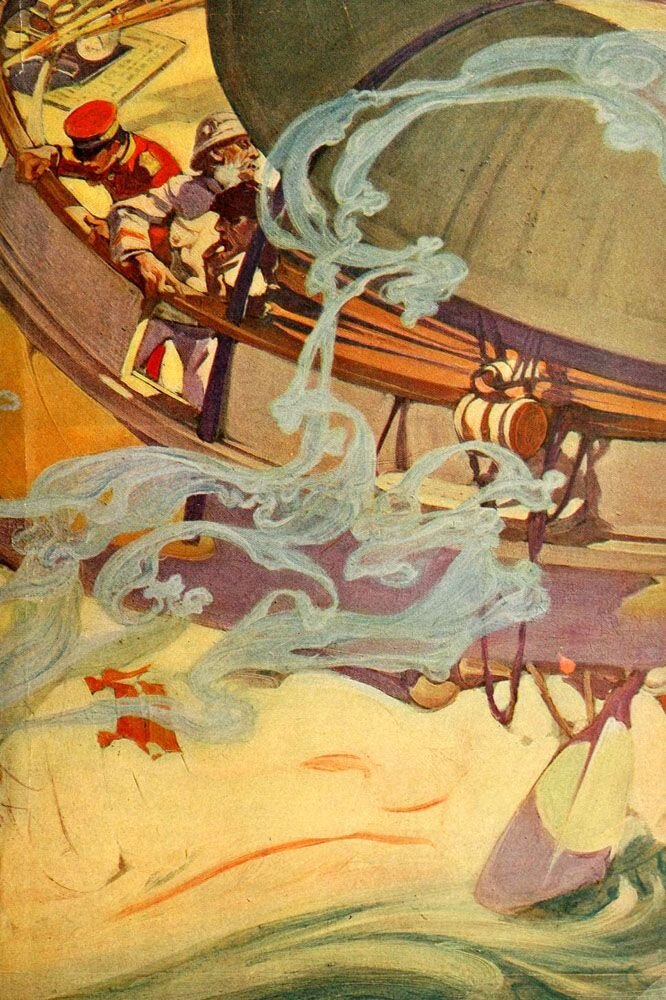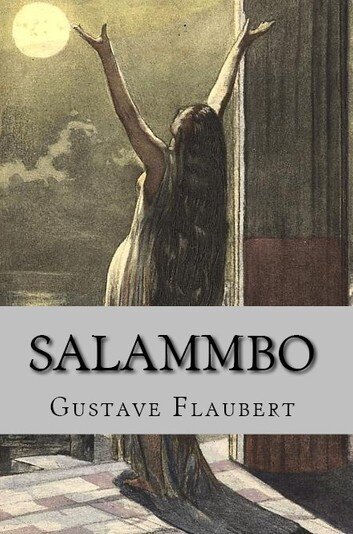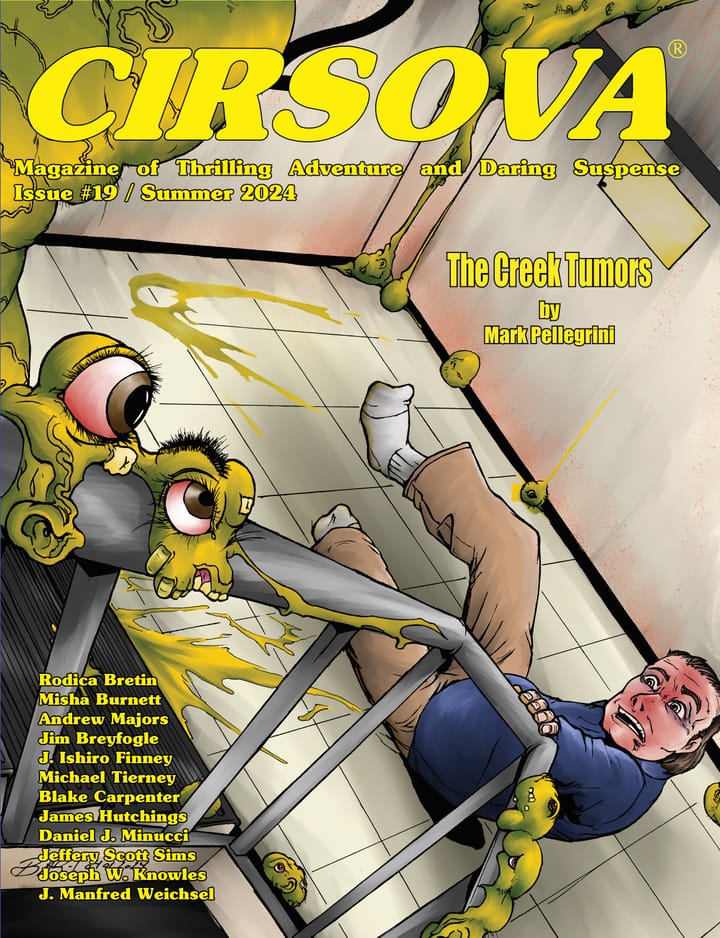With the Night Mail by Rudyard Kipling
“With the Night Mail” is a short story by Rudyard Kipling [Amazon link] originally published in 1905, and then edited and expanded into the 1909 version reviewed here. It is in a way just barely a story, a telling of an eventful airship crossing of the Atlantic in the midst of a storm, as the mail must go through! It is pretty clearly a way for Kipling to explore ideas, as a fair bit of the dialogue is generated during a tour of the airship’s engine room. I wouldn’t expect any less from the man who wrote a poem about industrial machinery.

With the Night Mail: A Story of 2000 A.D.: (Together with Extracts from the Contemporary Magazine in Which It Appeared) by Rudyard Kipling Cover illustrated by Frank X. Leyendecker
Yet Kipling’s mastery of the written word allows him to craft a compelling story around characters just barely sketched out, and without any higher stakes than a bad storm. Kipling understood very well that the point of fiction is to feed the soul, and the dutiful execution of the London to Quebec mail run such that neither snow nor rain nor heat nor gloom of night stays these couriers from the swift completion of their appointed rounds certainly does that.

Kipling is not known for being a writer of futuristic fiction, but if you take a step back you can see that futuristic and mythic fiction were popular modes of storytelling before anyone had coined the current terms science fiction and fantasy. Lots of well-known authors of that era dabbled in this kind of thing. Jack London may not surprise you as a example of 19th century writer who created what we would now call genre fiction, but what about Gustave Flaubert?

Well done futuristic fiction sometimes surprises us with its predictions, and “With the Night Mail” offers a vision of powered lighter than air flight assisted with radio that still seems pretty good. I could imagine that current international trade could look like what we see in the story if the dominant technology of air transport were dirigibles that could top 200 miles per hour groundspeed. That’s slower than jet aircraft, but space is far less constrained, so the total system capacity would probably be similar. Today, almost half the world’s freight moves by air, so the grain and ore dirigibles of Kipling’s story actually make some sense with his technology.
![The first ZeppelinBy Peter Scherer - Print & Photographs (P&P) Online Catalog of the Library of Congress [1], Public Domain, https://commons.wikimedia.org/w/index.php?curid=19374](https://www.benespen.com/content/images/content/v1/51259dfce4b01b12552dad3e/1632745934923-09G89AE2IEIWNH49S6XO/first_zeppelin_ascent.jpg)
The first Zeppelin
By Peter Scherer - Print & Photographs (P&P) Online Catalog of the Library of Congress [1], Public Domain, https://commons.wikimedia.org/w/index.php?curid=19374
The standard joke I make about airships is they are a signal that you have entered an alternate timeline. However, in Kipling’s day, dirigibles were an exciting technology that were making new things possible. Heavier than air flight was only two years old when Kipling wrote this! Contemporary authors use airships to set a story in the world Kipling lived in.
The 1909 expanded version of the story features notices from the Aerial Board of Control, letters to the editor, and advertisements that give Kipling an opportunity to fill in some of the details hinted at in the story proper. “With the Night Mail” has a remarkable degree of overlap with the themes that John J. Reilly liked to talk about at his blog The Long View. The A.B.C. is the de facto world government, evolving out of the principle noted by William McNeill and others that governments tend to expand to cover the economy.
However, the A.B.C is a very laissez faire world government, mostly concerned with keeping the peace and keeping the mail moving, and otherwise letting nations order their own affairs. In an era where future political arrangements in fiction tend toward either anarchic collapse or stifling overreach, the sunny competence and light touch of the A.B.C is refreshing.
I have a volume of collected futuristic fiction by Rudyard Kipling that was edited by John Brunner, this story was good enough to make want more. That seems like a great place to start.



Comments ()